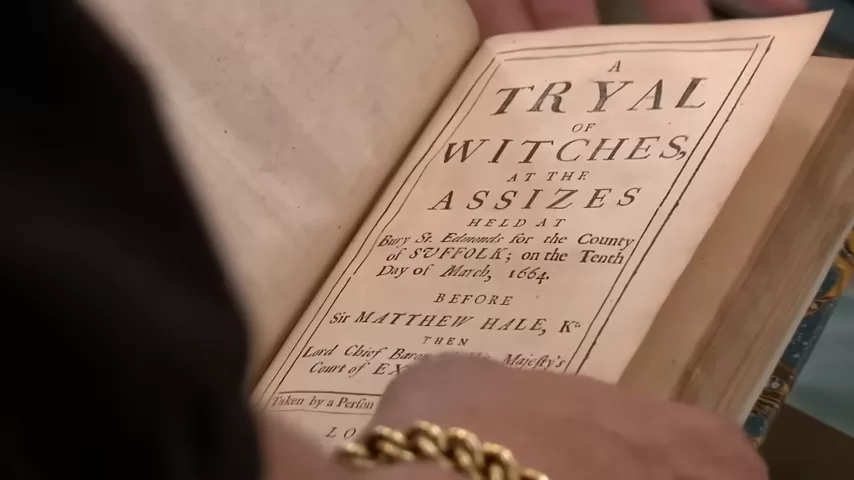Not every book sparks curiosity, chills, and scholarship all at once. But when a man walked into a pawn shop carrying a fragile old volume titled “The Trial of Witches”, it became instantly clear—this was no ordinary antique.
Bound in leather, published in 1716, and chronicling a chilling 17th-century trial in England, the book wasn’t just an artifact. It was a primary source on one of the darkest chapters in European legal history—and an unexpected window into the origins of America’s own witch trial hysteria.
“I got this from a friend who was done collecting,” the seller said. “The covers were falling off, so I had it rebound so someone could actually read it.”

The result? A well-preserved, second-edition historical book with ties to the infamous Salem Witch Trials. And with any luck, it could fund a college education.
A Chilling Legacy: The Trial of Witches, 1662
The book is a record of a witchcraft trial held in 1662 in Bury St. Edmunds, Suffolk, England, where two women were accused of using witchcraft against children. Though they never confessed, both were convicted and executed by hanging.
“It’s basically a transcript of the accusations, testimonies, and the trial,” the seller explained. “And it’s all in their words.”
That alone makes it a rare piece of history. But this trial went on to set the legal precedent for the use of “spectral evidence”—testimony that someone saw a ghost, spirit, or dream image of the accused—in court.
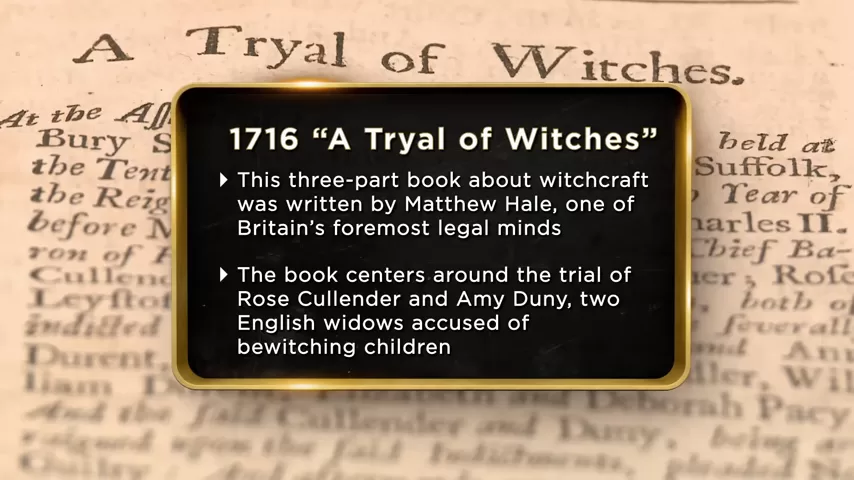
This precedent made its way across the Atlantic, where Cotton Mather, a prominent Puritan minister, cited it as justification during the Salem Witch Trials in 1692.
Spectral Evidence: Dreaming Your Way to the Gallows
What is spectral evidence? By 21st-century standards, it’s absurd—yet it led to real executions.
“It meant someone could say, ‘I saw that person’s spirit attacking me in a dream,’ and that was used as legal evidence,” the appraiser explained. “Imagine that. Your dream could get someone killed.”
And yet, this was legally acceptable during an era ruled by fear, superstition, and religious fervor. This book helped validate that logic—and sealed the fate of dozens during the Salem trials.
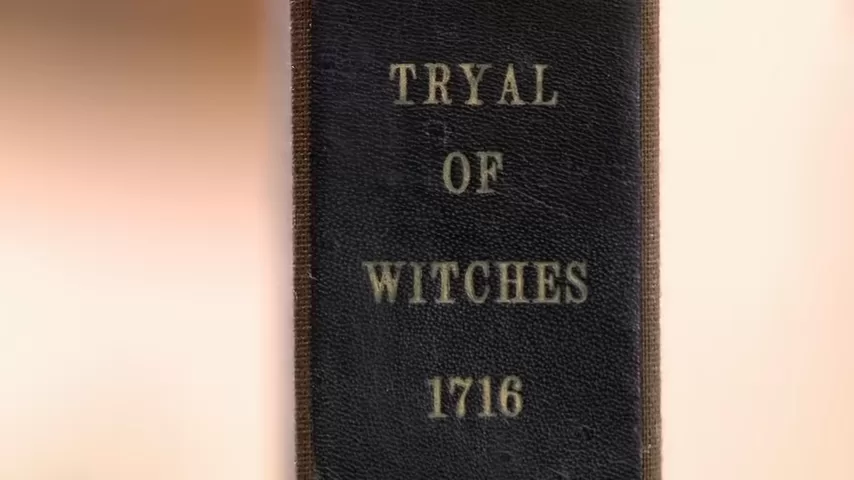
So while this copy was printed after Salem, its text reflects the trial that fueled it. And for historians and collectors, that makes it extraordinary.
Second Edition, Still Significant
The seller wasn’t sure whether he had a first edition or not. Upon review, the expert confirmed: this was a second edition, published in 1716. The first edition had come out in 1682, four years before the Salem trials began.
“This edition is still valuable,” the expert explained. “But because it came after the events it influenced, it’s slightly less desirable than the 1682 first.”

Still, the 1716 edition remains over 300 years old, and it contains verbatim transcripts from the 1662 trial, offering raw insight into the mindset of a society obsessed with rooting out witches.
Condition and Conservation
The seller had taken care to rebind the book, preserving its internal pages while making it durable for handling and display. For collectors, this was a smart move.
“It wasn’t in good shape when I got it,” he said. “But now someone else can read and appreciate it.”
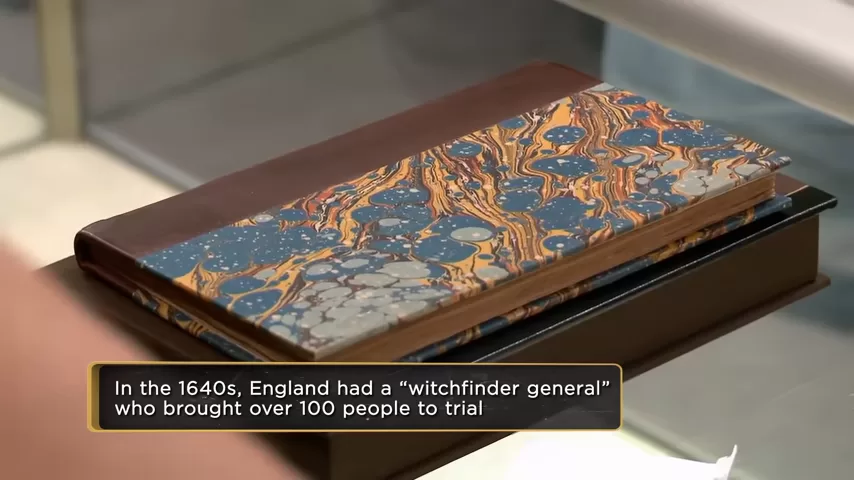
While purists sometimes prefer original bindings, a well-executed restoration can preserve value—especially when the content is historically important and the pages remain in good condition.
What’s It Worth?
After examining the condition, content, and market demand, the expert placed a realistic value of $1,500 to $1,600 on the book.
“It’s a great item,” she said. “Collectors of witch trial materials, rare legal history, or early modern British literature would love this.”

But it wasn’t likely to fetch the $2,500 the seller had hoped for—at least, not quickly.
The Negotiation: A Little Less Than Magic
With the market realities now clear, the seller adjusted his expectations. He asked for $1,250, and the shop offered $900.
“It’s about $1,100 retail, realistically,” the buyer explained. “I’ll offer you $1,000.”
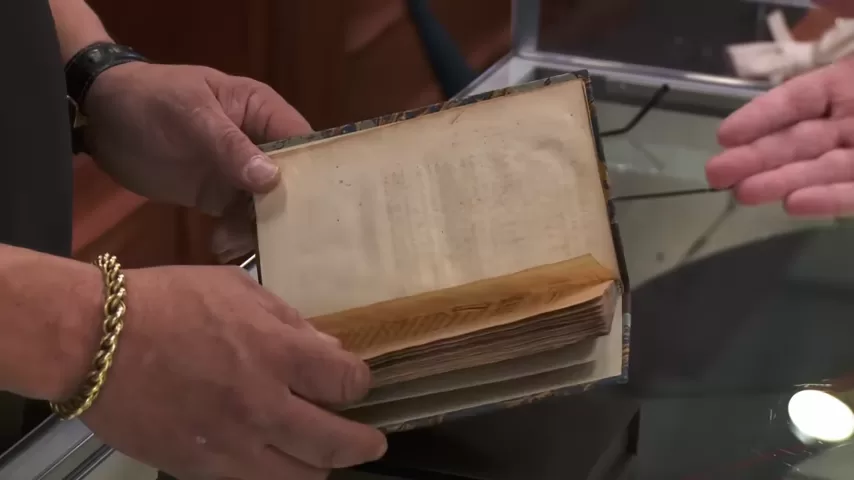
In the end, the seller accepted the $1,000 deal—still a handsome return for a book he didn’t originally purchase and was planning to use to fund his children’s education.
“Sure, I wanted $2,500,” he admitted. “But I understand where the market is.”
Why It Still Matters
This book is more than just paper and ink. It’s a firsthand account of injustice, superstition, and the way societies have justified oppression—especially against women—under the guise of fear.
It tells us how easily belief can outweigh logic, and how even the world’s most developed nations once sanctioned the unthinkable.
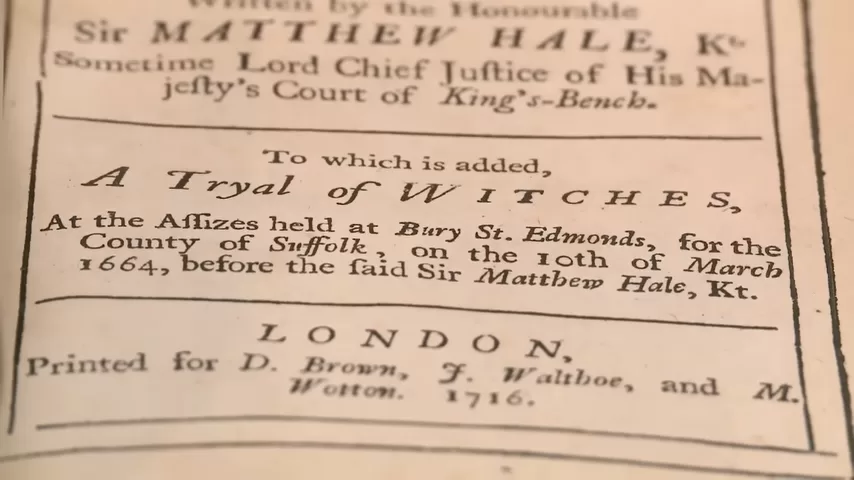
In an age of fake news, conspiracies, and social panic, the lessons of The Trial of Witches remain hauntingly relevant.
Final Thoughts: Truth, Terror, and a Thousand Dollars
You don’t need a wand to work magic—sometimes, all it takes is a rare book and a little historical awareness.
The seller walked away with $1,000 toward his twins’ college fund, and the shop walked away with a genuine piece of legal and cultural history—one that’s certain to fascinate the right collector.
And for everyone else? A reminder that what we once called justice was often anything but.
